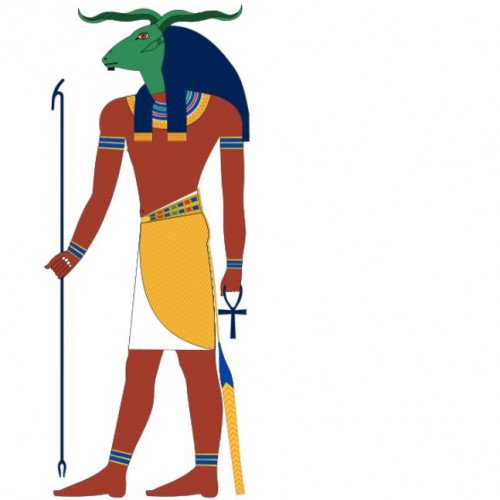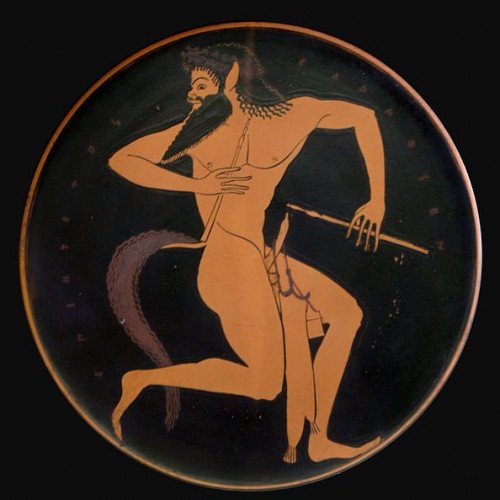Vote on Mythical creatures: Khnum vs Satyr

Khnum
Khnum or also romanised Khnemu (; Ancient Egyptian: 𓎸𓅱𓀭 ẖnmw, Koinē Greek: Χνοῦβις) was one of the earliest-known Egyptian deities, originally the god of the source of the Nile. Since the annual flooding of the Nile brought with it silt and clay, and its water brought life to its surroundings, he was thought to be the creator of the bodies of human children, which he made at a potter's wheel, from clay, and placed in their mothers' wombs. He was later described as having moulded the other deities, and he had the titles "Divine Potter" and "Lord of created things from himself".
Statistics for this Xoptio

Satyr
In Greek mythology, a satyr (Greek: σάτυρος, translit. sátyros, pronounced [sátyros]), also known as a silenus or silenos (Greek: σειληνός seilēnós [seːlɛːnós]), is a male nature spirit with ears and a tail resembling those of a horse, as well as a permanent, exaggerated erection. Early artistic representations sometimes include horse-like legs, but, by the sixth century BC, they were more often represented with human legs. Comically hideous, they have mane-like hair, bestial faces, and snub noses and are always shown naked. Satyrs were characterized by their ribaldry and were known as lovers of wine, music, dancing, and women. They were companions of the god Dionysus and were believed to inhabit remote locales, such as woodlands, mountains, and pastures. They often attempted to seduce or rape nymphs and mortal women alike, usually with little success. They are sometimes shown masturbating or engaging in bestiality. In classical Athens, satyrs made up the chorus in a genre of play known as a "satyr play", which was a parody of tragedy and was known for its bawdy and obscene humor. The only complete surviving play of this genre is Cyclops by Euripides, although a significant portion of Sophocles's Ichneutae has also survived. In mythology, the satyr Marsyas is said to have challenged the god Apollo to a musical contest and been flayed alive for his hubris. Though superficially ridiculous, satyrs were also thought to possess useful knowledge, if they could be coaxed into revealing it. The satyr Silenus was the tutor of the young Dionysus and a story from Ionia told of a silenos who gave sound advice when captured. Over the course of Greek history, satyrs gradually became portrayed as more human and less bestial. They also began to acquire goat-like characteristics in some depictions as a result of conflation with the Pans, plural forms of the god Pan with the legs and horns of goats. The Romans identified satyrs with their native nature spirits, fauns. Eventually the distinction between the two was lost entirely. Since the Renaissance, satyrs have been most often represented with the legs and horns of goats. Representations of satyrs cavorting with nymphs have been common in western art, with many famous artists creating works on the theme. Since the beginning of the twentieth century, satyrs have generally lost much of their characteristic obscenity, becoming more tame and domestic figures. They commonly appear in works of fantasy and children's literature, in which they are most often referred to as "fauns".